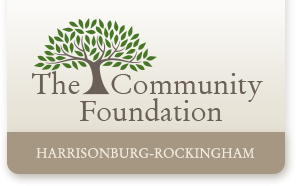Boiling down the alphabet soup: What actually are RMDs and how do they relate to QCDs?
 Boiling down the alphabet soup: What actually are RMDs and how do they relate to QCDs?
Boiling down the alphabet soup: What actually are RMDs and how do they relate to QCDs?
If you get cross-eyed when you start reading about Required Minimum Distributions (RMDs) and Qualified Charitable Distributions (QCDs), you are not alone! And, given the December 2022 passage of SECURE 2.0 legislation, changes to RMD rules are especially important to understand if you are involved in charitable giving and have reached the age of 70 1/2.
What is an RMD in the first place?
A little history may help here. RMDs date back to 1974 when the Employee Retirement Income Security Act (ERISA) was enacted to provide for pension reform and to offer a retirement savings vehicle to non-pensioned workers through vehicles referred to as “qualified retirement plans” that are allowed to grow tax-free while assets are in the plan.
By requiring that a taxpayer start taking distributions from qualified retirement plans when the taxpayer reaches a certain age, the United States government is able to start collecting tax revenue on these “required minimum distributions” from assets that have grown tax-deferred for all those years and decades.
Now here is where we get into the weeds. The distributed amount of the RMD is reported by the plan administrator on IRS Form 1099-R (but–and here’s a nuance–not if the RMD was “satisfied” by a Qualified Charitable Contribution [QCD]—see below!). A taxpayer enters this amount on Line 4B of the Form 1040 Federal income tax return, and, of course, the amount is included as taxable income for the year it was distributed. So, the net-net here is that RMDs add to taxable income but not in the case of direct transfers to qualifying charitable organizations (the QCD).
What types of accounts require RMDs?
For 2023, account owners aged 73 and older who participate in qualified retirement plans such as these are subject to RMDs:
- Traditional IRA
- Simplified Employee Pension (SEP)
- SIMPLE IRA
- Employer-sponsored 401(k), 430(b) or 457
Once begun, RMDs occur annually, until account depletion or the owner’s death. (Note that distributions must also be taken from inherited IRA accounts, though under different rules.)
How is the RMD amount calculated?
A qualified retirement account’s entire balance is considered for calculating an RMD calculation, although of course only a fraction of the balance must be distributed each year. Unfortunately, the distribution amount is not easily or consistently determined. This contributes to some retirees’ confusion about RMDs and the requirements. Online RMD calculators can be found here or here, and your retirement account administrator can provide guidance.
When do the RMDs start?
That’s tricky, too! For years 2023 – 2032, the start date is your age-73 calendar year. For example, a 1955-born account owner would begin in 2028. Beginning in 2033, it’s your age-75 calendar year. Account holders born in 1960 enjoy a sort-of “two-year extension,” given that they would turn 73 in 2033. But since the age-75 provision begins January 1, 2033, their RMD begins in 2035.
For all account owners, the big benefit of the now-later RMDs comes from retaining account balances longer. You avoid adding unnecessarily to your taxable income and therefore reduce the risk of bumping to a higher tax bracket. Prior to SECURE Act increases passed in 2019 and 2022, RMDs began at age 70 ½ and age 72. So taxpayers can now enjoy a few more years of tax-free investment growth.
How charitable taxpayers can check the RMD box with a QCD
Here’s where the QCD comes in (finally!) Now, armed with an understanding of how the RMD rules apply to your situation, you can begin to see how the QCD can provide a huge benefit if you own IRAs. QCDs are truly taxpayer and charity-friendly vehicles.
For starters, you can start making QCDs at age 70 ½–well before you’ve reached the age when you’re required to take RMDs. A QCD happens when you direct a distribution from an IRA of up to $100,000 annually (or $200,000 if you file tax returns jointly) to one or more qualifying charitable organizations, including a designated, field-of-interest, or unrestricted fund at The Community Foundation. While the QCD is itself not tax deductible per se, the overall effect of the QCD is to lower your taxes because the QCD counts toward your RMD but, unlike an RMD, it is not included in your taxable income.
The bottom line? If you have reached the age of 70 ½, own an IRA, care about charitable causes, and don’t need a full RMD income to cover your living expenses, reach out to The Community Foundation to learn how a QCD could work beautifully for you.
This article is provided for informational purposes only. It is not intended as legal, accounting, or financial planning advice.













